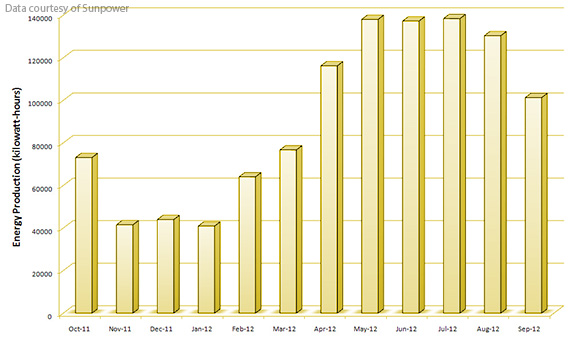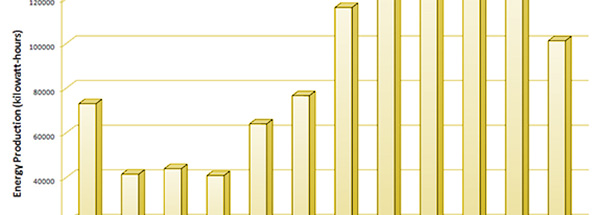

Seven months ago, the San Mateo Union High School District (SMUHSD), which includes Aragon, started making a surplus of energy per month, allowing the school to sell back to the grid. Aragon generates enough power to sustain itself and sell off the excess. These 17,000 solar panels on the roofs of Aragon have proven to be a great asset to the school.
The solar energy production is displayed on the television mounted on the wall of the attendance office. It displays the energy production peak, the amount of energy produced today, and the total energy produced overall.
SMUHSD allocates the funds accrued from the energy surplus towards the classroom. The Environmental Impact Committee supervisor Amy Schwartz, comments, “One of the major advantages to having the solar panels is from an administrative and district level, it saves the school money. It costs money up front to put in the solar panels, but because you’re saving money each year on the electric bills, you should be able to pay off that up front cost. If we are generating so much energy with the solar panels, you can sell it back to the utility.”
McManus adds, “It depends on the weather patterns. There’s air conditioning during the summer months for work hours. During the winter, the billing goes down substantially by 20 to 30 percent as there isn’t as much activity on the roofs.”
By the time lunch arrives on a sunny day, Aragon’s solar panels have already produced 6,190 kilowatt hours (kWh). That is the equivalent of 10,240 miles not driven by car. Of course, the amount of energy generated per day depends on the weather and how long the school day is. Solar electric systems generate power during daylight hours, specifically between 8 a.m. and 5 p.m. The solar energy can also be turned off with a switch. The most energy produced in a day at Aragon is 2,405.28 kilowatts, and the total energy produced since the solar panels have been activated is 20.11 gigawatts. A SunPower Employee states, “It’s a lot: 20.11 gigawatts are enough to power 300 households for a year.”
Aside from the solar panels, Aragon has advanced other environmentally friendly practices. Vice principal Joe Mahood states, “The classroom walls are all insulated, but the library wall and the office walls … it’s very expensive to insulate.”
He adds, “These are all double pane windows, all the way on the outside, so these are more eco-friendly than then the others ones.” In addition, Mahood adds, “When I leave, [the lights] will automatically turn off.” These fluorescent lights turn off when they don’t sense movement, saving energy in the long run. They are located all around campus in classrooms as well as the office.
From the perspective of student activism, the EIC is working towards more ways to become a greener school. Schwartz concludes, “I think it really is more student-driven and something that students have an interest in.”




